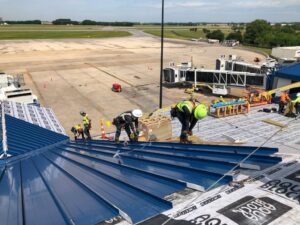Southwest Airlines Takes Action Amid Staffing Challenges in Several Cities
ATLANTA — In a surprising move that has drawn attention across the airline industry, Southwest Airlines has proposed voluntary buyouts and extended leaves of absence for airport employees as part of a strategy to tackle what they describe as “overstaffing in certain locations.” The airline’s troubles stem from a significant shortage of new planes from Boeing, and they are trying to navigate these challenges without losing their edge.
Why the Changes?
On Monday, the announcement came as a response to mounting pressure from a hedge fund pushing Southwest to boost profits and increase their stock prices. Since early 2021, the stock has faced a sharp decline, prompting the need for strategic changes.
The buyout and leave offers are being extended to employees at airports in a variety of cities including Atlanta, Los Angeles, Dallas, Miami, Baltimore, Detroit, and Cleveland. The list doesn’t stop there; workers at locations in Buffalo, New York; Corpus Christi, Texas; Myrtle Beach, South Carolina; Portland, Oregon; Tampa, Fort Lauderdale, and Fort Myers, Florida; Burbank, Long Beach, San Jose, and Santa Ana, California are also impacted.
Changes on the Horizon
This isn’t the first time Southwest has made cuts this year. Earlier in 2024, the airline announced plans to trim flights and reduce operations in Atlanta and other cities, aiming to eliminate routes that weren’t bringing in profits. This calculated strategy led to a loss of around 200 flight attendant jobs and 140 pilot positions. However, it’s essential to note that the buyouts currently on the table are strictly targeting ground operations staff such as customer service agents, baggage handlers, and cargo workers. Pilots and flight attendants will not be affected by this offer.
Officials from the airline have stated that by the end of this year, they expect to have 2,000 fewer employees compared to the start of the year. This comes after an impressive growth period when Southwest expanded its workforce from 66,600 to nearly 75,000 employees just last year. It’s also important to highlight that these numbers include part-time employees counted as half.
Understanding the Strategy
In a company statement, Southwest acknowledged that they have had to reduce overall capacity to align with demand, while adjusting to delays in aircraft deliveries. “Offering voluntary separation and extended time off to contract and noncontract employees, along with continued slowed hiring, will help us avert overstaffing in certain locations,” the airline assured.
Looking Ahead
As the airline navigates this rocky road, the impact of these measures will unfold. Southwest seems to be betting that these voluntary separation packages and strategic cuts will allow them to emerge stronger when aircraft deliveries stabilize and travel demand rebounds.
For many long-standing employees and those new to the airline, this news might raise questions and concerns about job stability in an industry that has faced so much turbulence in the past few years. While the immediate focus is on addressing surplus staffing, how the airline manages to strike a balance between efficiency and employee satisfaction remains to be seen.
As the airline industry continues to grapple with unprecedented challenges, remaining agile and responsive to these shifts will be critical for Southwest and its competitors. Stay tuned for updates as this story continues to evolve.







